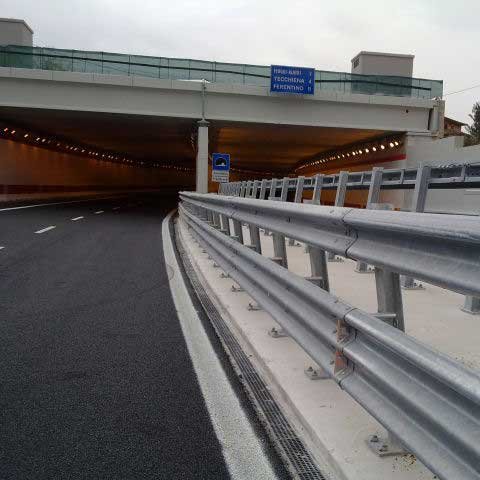
The longitudinal or transverse gradient of the road as well as the gradient course (elevation of the road axis) are decisive here. In addition, the elevation of the receiving water is important, because if the tunnel drainage is lower than e.g. streams or canal systems, lifting systems are necessary.
For permanently reliable drainage, requirements for resistance (frost, de-icing salt, etc.) must be taken into account, as well as the exposure of the concrete quality of drainage channels and their foundations. For concrete drainage channels, the exposure classes XC4, XD3, XF4 apply.






